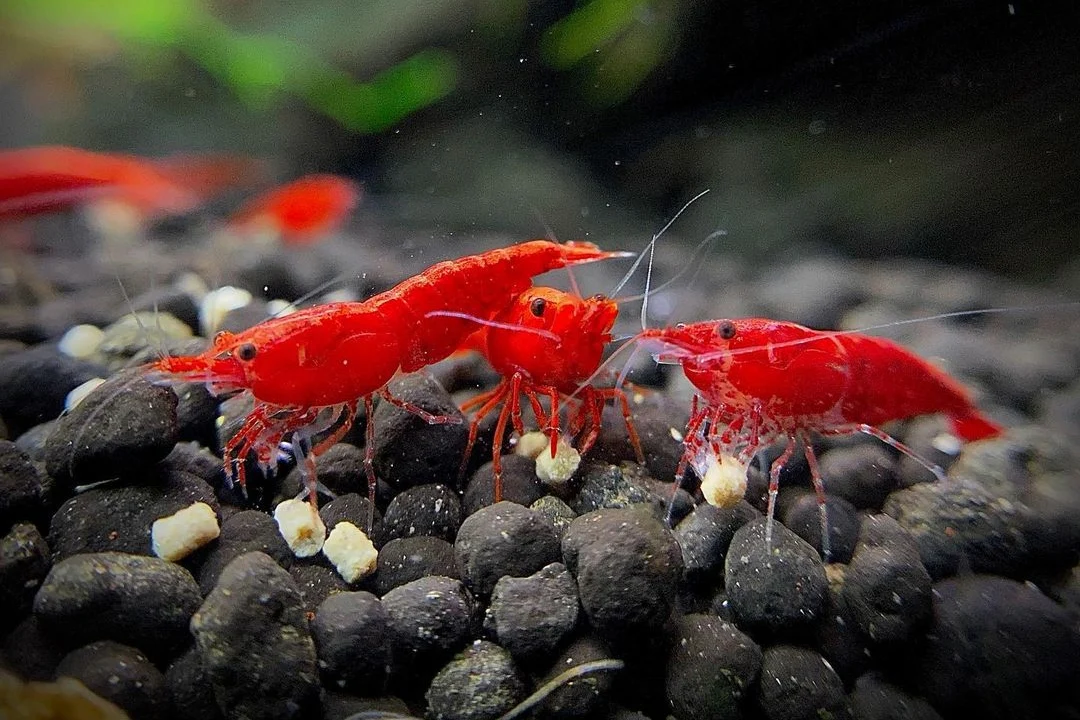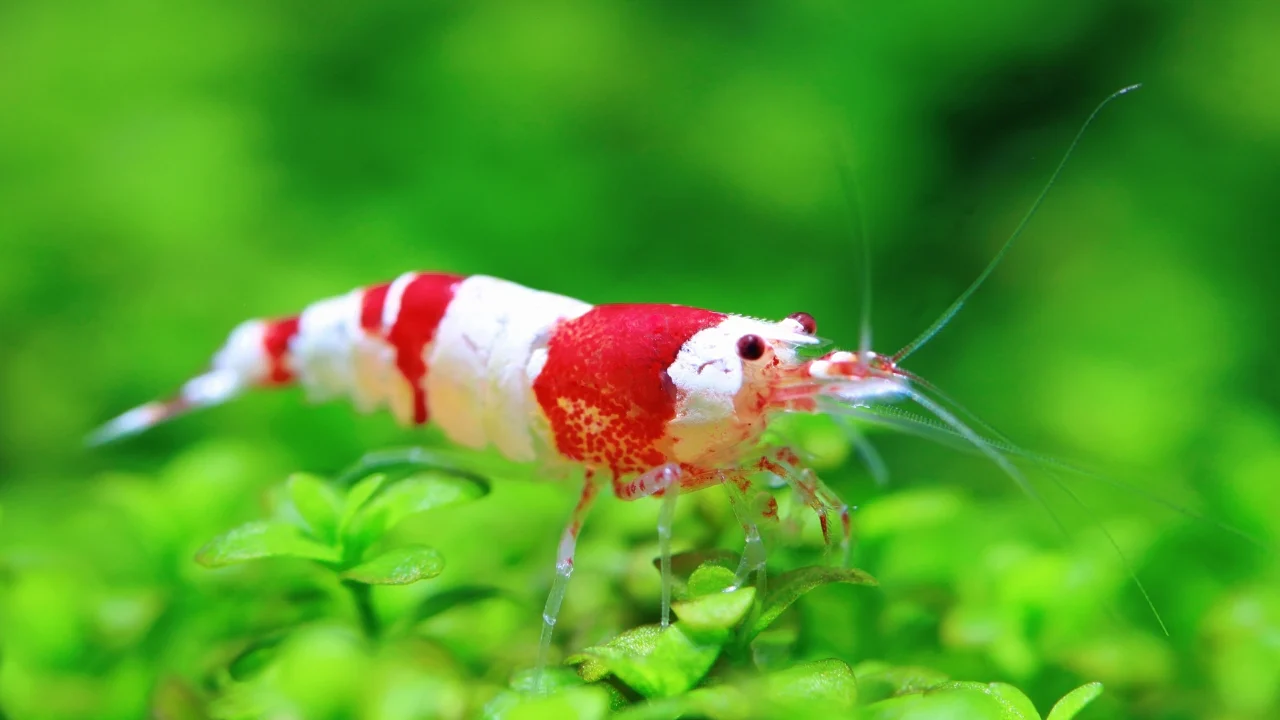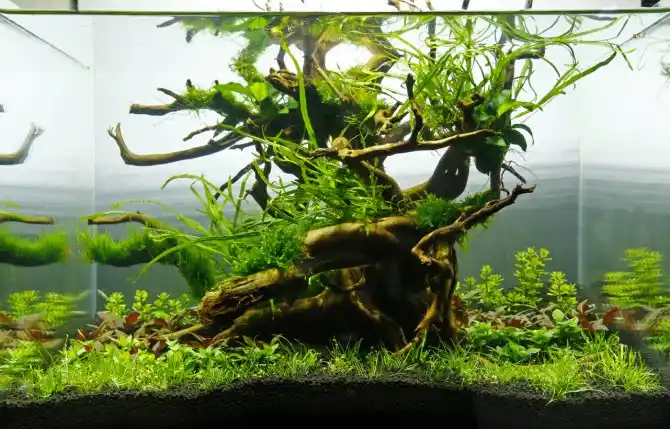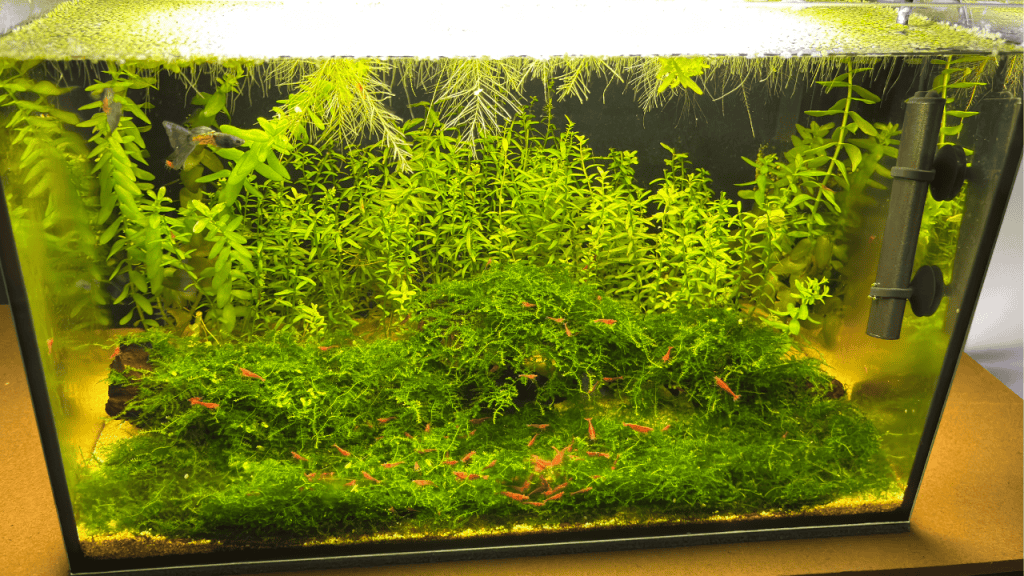Habitat Requirements
Neocaridina shrimp thrive in established tanks with plenty of hiding spaces and surfaces to graze on. A well-planted tank with driftwood, rocks, and leaf litter provides the perfect environment for them to explore and feed. A mature biofilm on surfaces is extremely beneficial for these shrimp.
- Tank Size: Minimum 5 gallons (19 liters), larger is better for a stable colony
- Substrate: Any aquarium-safe substrate is suitable; darker substrates make colors pop
- Plants: Java moss, Anubias, Amazon swords, floating plants for shade
- Hiding Places: Driftwood, ceramic tubes, cholla wood, Indian almond leaves
Feeding
Neocaridina shrimp are excellent scavengers that will constantly forage for food. They primarily feed on biofilm, algae, and detritus in your tank.
- Natural Diet: Biofilm, algae, detritus, decaying plant matter
- Supplemental Foods: High-quality shrimp pellets, blanched vegetables (spinach, zucchini, kale), leaf litter (Indian almond leaves, mulberry leaves)
- Feeding Schedule: Small amounts 2-3 times per week; shrimp should be able to consume all food within 2-3 hours
- Calcium: Ensure adequate calcium for proper molting through mineral supplements, cuttlebone, or shrimp mineral balls
Breeding
Neocaridina shrimp breed readily in captivity when kept in proper conditions. They reproduce through eggs carried under the female's tail (berried females) until the babies hatch as miniature versions of adults.
- Sexual Maturity: Reached at approximately 4-6 months of age
- Breeding Trigger: Stable water parameters and good nutrition
- Pregnancy Duration: 3-4 weeks from eggs appearing to hatching
- Brood Size: 20-30 baby shrimp per female
- Special Care: No special care required; babies will feed on the same biofilm as adults
Pro Tips for Success
- Maintain stable water parameters - avoid sudden changes
- Use a pre-filter sponge on filter intakes to prevent baby shrimp from being sucked in
- Perform small, regular water changes (10-15%) instead of large, infrequent ones
- Always treat tap water with a quality dechlorinator before adding to the tank
- Keep copper levels at absolutely zero - copper is highly toxic to shrimp
- Introduce new shrimp slowly with proper acclimation (drip method recommended)




